[/caption]
The Atlantis space shuttle now sits poised for her final scheduled flight to space. On this mission, STS-132, Atlantis will bring a veteran six-man crew to the International Space Station to deliver a new Russian science module called Rassvet (Russian for “Dawn.”) Launch is currently set for today, May 14 at 2:20 p.m. EDT (1820 GMT) from Kennedy Space Center.
The Atlantis shuttle is the fourth of the five original shuttles and has pulled her weight in 32 successful launches – compared with 39 for Discovery, and 28 for Columbia, 25 for Endeavour and 10 for Challenger.
In looking back, this mainstay of the shuttle fleet has definitely had her share of highlights and successful missions. But, alarmingly, there have also been some close calls where this orbiter and her crews have teetered on the edge of disaster.
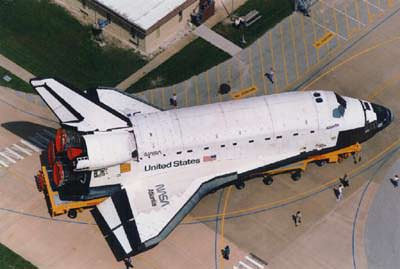
Triumph: Atlantis’ first flight came on October 3, 1985. The STS-51-J flight for the Department of Defense brought a five-man military crew and two DoD communications satellites to space.
Close call: On Atlantis’ next flight, just a month later, STS-61-B, which was the second night launch in the shuttle program, one of the solid rocket boosters experienced primary O-ring erosion in both nozzle joints. There was blow-by of hot gases past the primary O-ring. Post-launch analysis brought the problem to NASA’s attention, but they ignored the issue. Just three months later, an O-ring leak on Challenger destroyed the vehicle and killed the seven-member crew.
Close call: On STS-27 in December, 1988, just the second mission after the Challenger accident, another foreboding of future disaster occurred. 85 seconds after launch, a piece of insulation on the tip of the shuttle’s right-side solid-fuel booster broke away and struck Atlantis’ right side. After the flight, NASA engineers said that while Atlantis had suffered more tile damage than usual, it “wasn’t a major concern.”
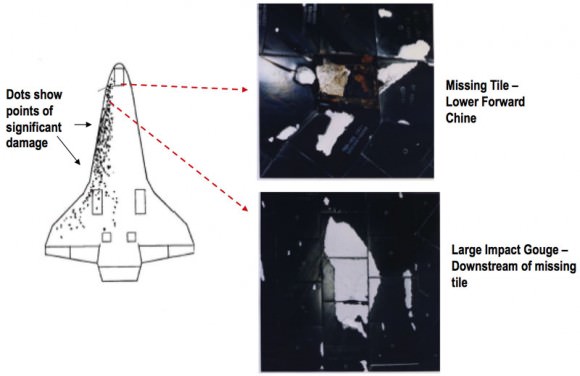
But more than 700 heat shield tiles were damaged, and one tile was completely missing. The metal underneath was partially melted.
The crew knew about some of the damage because of routine heat shield inspections. However, because it was a classified Department of Defense mission, no pictures or television were being downlinked, even to Mission Control. Because there was limited communication between the crew and Houston, the problem was mostly overlooked by NASA officials and the crew actually feared for their lives.
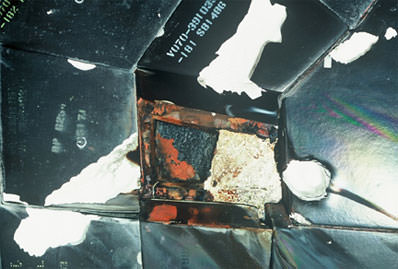
“We had spent all that money and all that time rebuilding and revamping and we launched one successful mission, we [could have] lost the very next one,” said mission commander Robert “Hoot” Gibson in an article by Bill Harwood for Spaceflightnow.com. “I think the Congress would have said OK, that’s the end guys, we just don’t need to do this again. I think that just would have been the end of it.”
But Atlantis returned her crew safely, even with the damaged tiles.

Triumph: Atlantis became a satellite deploying machine! In May and October of 1989, two major interplanetary science missions were launched from Atlantis: Magellan to Venus and Galileo to Jupiter. Then in April 1991, the Compton Gamma Ray Observatory was sent on its mission by an Atlantis crew. Several other satellites launched from Atlantis’ payload bay including more DoD satellites and a Tracking Data Relay Satellite (TDRS-5).
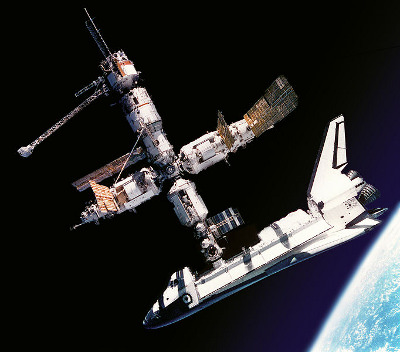
Triumph: In June 1995, Atlantis became the first shuttle to dock with the Russian space station Mir. The STS-71 mission began the first phase of an astronaut-cosmonaut exchange program called the Shuttle – Mir program, which eventually led to the International Space Station program. Atlantis made six more trips to Mir out of nine total by the shuttles.
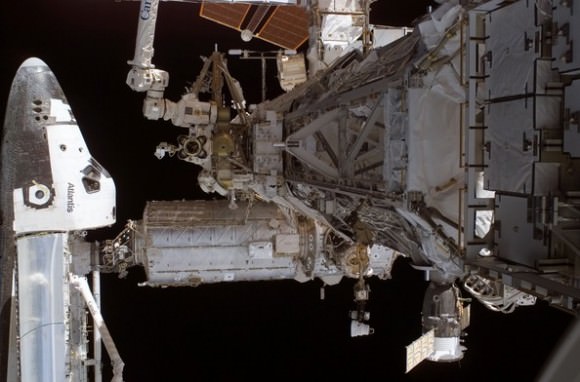
Triumph: Atlantis was a major contributor to the construction of the ISS, and in February 2001 brought the Destiny Lab – one of the major component—to the station This current mission will be Atlantis’ 11th trip to the ISS.

Close call: Rescue ship: Following the Columbia accident, Atlantis was on standby for several rescue flights – called Launch On Need missions, including for the return to flight mission, STS-114. After the Columbia accident, it was recommended that rescue shuttles be on standby which would be mounted to rescue the crew of an orbiter if their vehicle was damaged and deemed unable to make a successful reentry. Atlantis will also be on standby as a LON – designated as STS-335 — for the last shuttle flight.
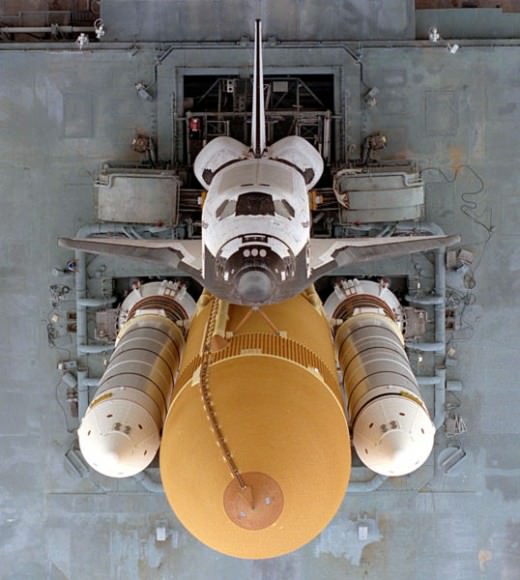
Close call: Atlantis was almost decommissioned. NASA had planned to withdraw Atlantis from service in 2008 to have the shuttle completely overhauled. However, because of the final retirement of the shuttle fleet in 2010, it didn’t make economic sense to do the make-over — what is called the Orbiter Maintenance Down Period. But aging parts needed to be replaced and refurbished, and some critical parts were past their design lifetime. Originally, it was planned that Atlantis would be kept in near flight condition to be used as a parts hulk for Discovery and Endeavour. However, with the significant planned flight schedule up to 2010, NASA engineers found ways to keep Atlantis in flying condition, including a new way of pressurizing helium tanks to reduce the risk of possible rupture. Atlantis was then swapped for one flight of each Discovery and Endeavour.
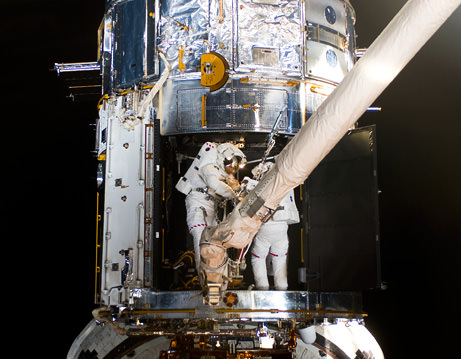
Triumph: May 2009 4th Hubble servicing mission. Atlantis brought the crew of STS-125 to the Hubble Space Telescope for a final mission to refurbish and extend the lifetime of the noble and iconic space telescope. Atlantis’ crew made 5 space walks to do several painstaking repairs, as well as install the Cosmic Origins spectrograph, an instrument designed to allow Hubble to look farther into the universe in the ultraviolet light spectrum than ever before, and Wide Field Camera 3, which allows astronomers to better observe galaxy evolution, dark matter and dark energy. It was such a great mission, IMAX made a movie about it!
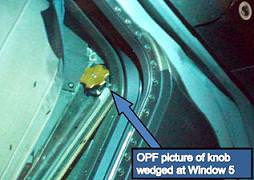
Close call: After the STS-125 mission, a work light knob was discovered jammed in the space between one of Atlantis’s front interior windows and the orbiter dashboard structure. The knob was believed to have entered the space during flight, when the pressurized Orbiter was expanded to its maximum size. Then, once back on Earth, the Orbiter contracted, jamming the knob in place. Engineers determined leaving the knob where it was would be unsafe for flight, and some options for removal (including window replacement) would have included a 6 month delay of Atlantis’s next mission (planned to be STS-129). Had the removal of the knob been unsuccessful, the worst-case scenario is that Atlantis could have been retired from flight, leaving Discovery and Endeavour to complete the manifest alone.
But On 29 June 2009, Atlantis was pressurised to 17 psi/120 kPa which forced the orbiter to expand slightly. The knob was then frozen with dry ice, and was successfully removed.
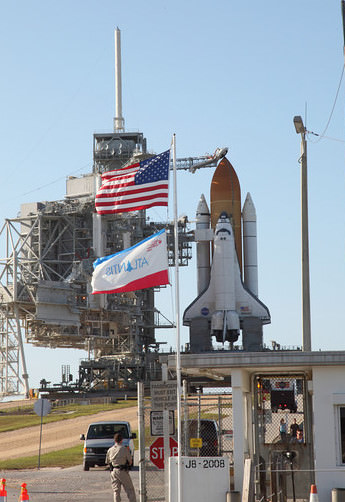
Will there be one – and maybe two more triumphs?
This current mission will be NASA’s 132nd space shuttle flight. But will it be Atlantis’ last? Since Atlantis will serve as the LON rescue shuttle and basically will be ready to fly, some shuttle proponents have said it should fly – why waste a space shuttle that is fully ready to launch to space? Others have proposed an extension of the shuttle program to shorten the gap until the NASA’s next human vehicle –whatever that may be – will be ready. Only time will tell if funds will be appropriated for an additional flight or program extension before the shuttle fleet becomes artifacts in museums.
But Atlantis has stood the test of time and for 25 years has provided many memorable moments.
Godspeed, Atlantis
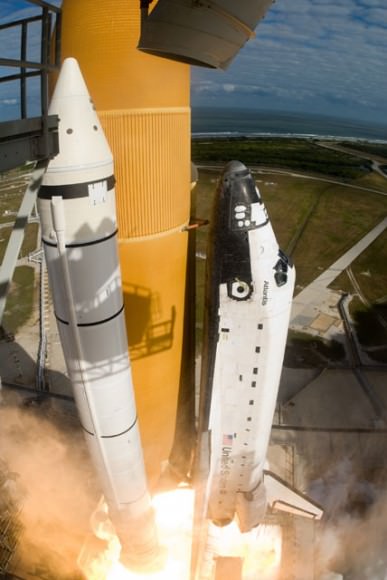
This video aired on NASA TV today, about Atlantis’ legacy:

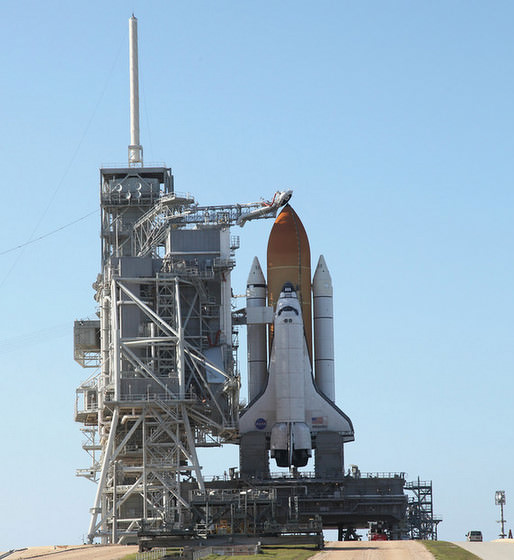
Good read…
Regarding the possibility of using the launch on need version, I was wondering if it would make sense to just send Atlantis up and leave it docked to the station?
The crew could return via Soyuz, and the station would have expanded living space and amenities, plus of course it could serve as an extra lifeboat or something.
Or better yet – you leave it there, refuel it by Soyuz, and use it as an interplanetary transport 🙂
Yikes! I wonder if any other ‘close calls’ went under reported during top secret missions?